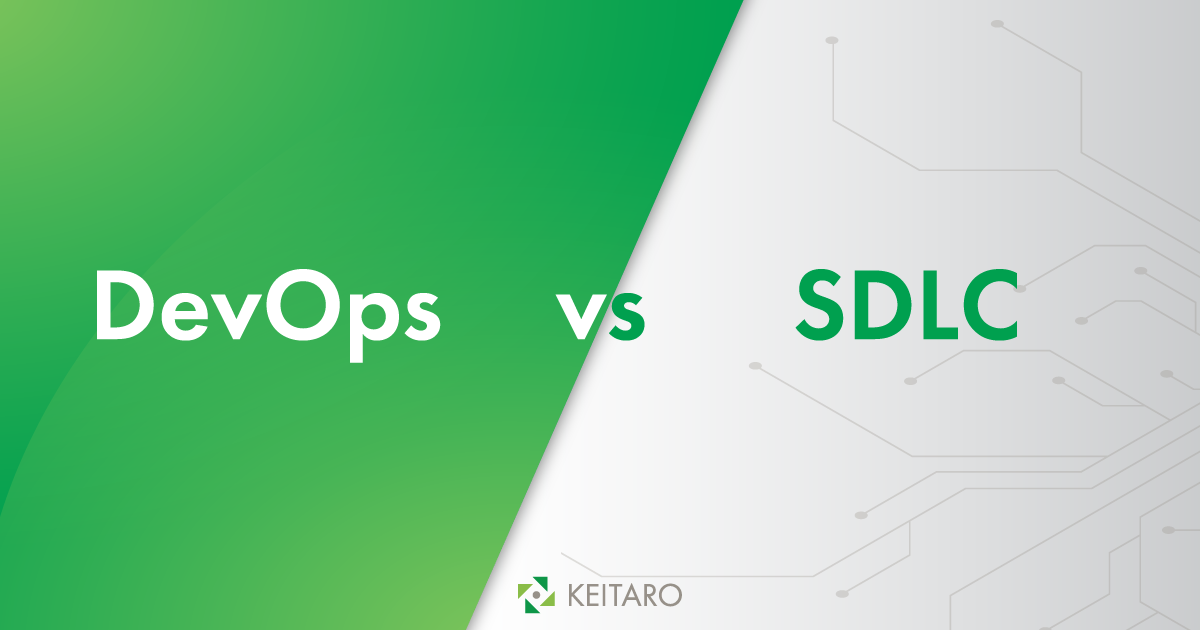Are you using a traditional software development life cycle and wondering how DevOps fits in? Look no further, as we have the answers you’re seeking. In this article, we will explore the role of DevOps in a traditional SDLC, and how it can improve collaboration, speed up deployment, and enhance the overall quality of software development. So, whether you’re new to DevOps or just curious about its place in a traditional SDLC, keep reading to learn more.
First we will start with ‘What is SDLC?’
SDLC, or Software Development Life Cycle, is a traditional approach to software development that emphasizes the need for a structured and sequential process for software development. The SDLC process typically involves requirements gathering, design, implementation, testing, deployment, and maintenance. Each process phase has specific deliverables and milestones that must be met before the project can move on to the next phase.
The systems development life cycle expresses stages and control steps as a series of phases, such as analysis, design, and development. The full life cycle covered everything from initial conception right through to retiring the system.
More recently, SDLC has been used informally for any software development process. As we can’t compare DevOps to every possible process (of which it’s one), we’ll stick to the formal definition of the SDLC as a traditional phased approach to software delivery.
Why was the SDLC created?
You need to travel back in time to understand the motivation for the SDLC. Our history of software delivery follows the evolution of development processes since 1950. Normally the biggest part for changing what is needed is technology development.
As an early programmer, you didn’t have an integrated development environment with syntax highlighting, code navigation, or compiler warnings. People in non-programming roles also lacked software tools to assist their work or to improve communication between roles.
Before the SDLC was introduced, systems were created using an ad-hoc code and fix approach. With no defined process or controls and with many technological limitations, the phased model solved many problems organizations had at the time when creating large applications.
The SDLC solved two types of problems. One is issues scaling the code and fixing approaches to large-scale systems, and another is specific technical limitations of the time.
So there goes the question why the SDLC became a problem. So the most common problems which SDLC came across are:
1. Organizations had increased the number and complexity of phases in their SDLC
2. The SDLC hadn’t kept pace with improved tools
When your primary tool for solving software delivery problems is a set of phases and control steps, you tend to solve most problems by adding more. As your process grows, it increases each software version’s transaction cost. Heavyweight processes were increasing in cost while machines were getting cheaper and compilation faster.
Does DevOps Have an SDLC?
The traditional SDLC is no longer seen as good practice. Though it’s possible to avoid it with appropriate care, it’s more common for traditional phased approaches to result in large batches that are passed between specialized teams. This is incompatible with a DevOps approach, which is a methodology that emphasizes collaboration and communication between development and operations teams to enable continuous delivery and deployment of software. DevOps seeks to break down the barriers between development and operations teams and encourage a culture of continuous improvement and learning.
In DevOps and Continuous Delivery, there are still a series of tasks that need to be completed to deliver software. Instead of a structured SDLC, you focus on reducing batch size, creating autonomous vertical teams, and automating your deployment pipeline. You can design a process that complements the DevOps culture and capabilities.
The process of DevOps
When the term “DevOps” was introduced to IT people, they said, “we have been doing this for years – code merging, configuration management, release management, deployment using automated tools.”
Continuous Delivery is central to a DevOps process, but you still need a way to discover and share what to build. Your context will guide your selections, but an example process has impact mapping, specification by example and CD (continuous delivery).
When you think of the software development life cycle now, take your modern DevOps process and extend it to encompass the creation of the original idea, and consider how software could be retired when it’s no longer valuable enough to maintain.
Given the changes to the underlying constraints and competition, the traditional formal method based on the systems development life cycle is no longer appropriate for software delivery.
Conclusion
In summary, SDLC is a traditional approach to software development that focuses on the structured process of software development, while DevOps is a newer methodology that emphasizes collaboration, automation, and continuous improvement across the entire software delivery pipeline. There are challenges right out of the gates – from choosing the right tool to change management, but the payoff, in the long run, may enable you to scale to heights as a DevOps Engineer.



